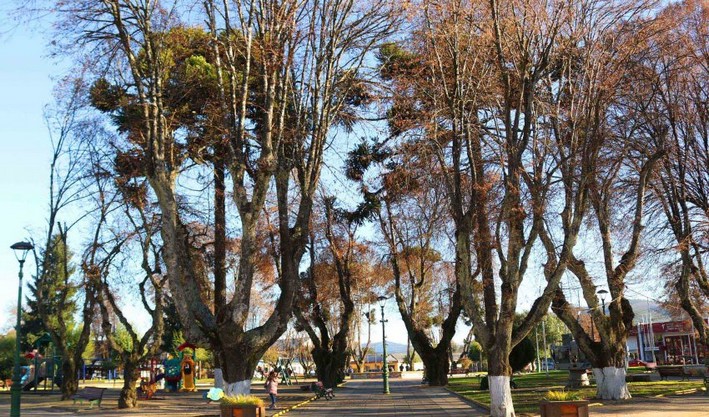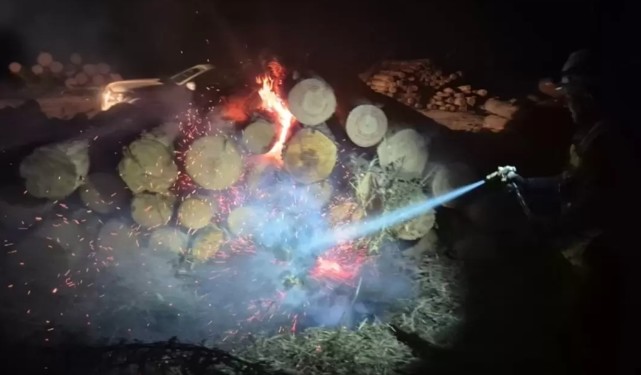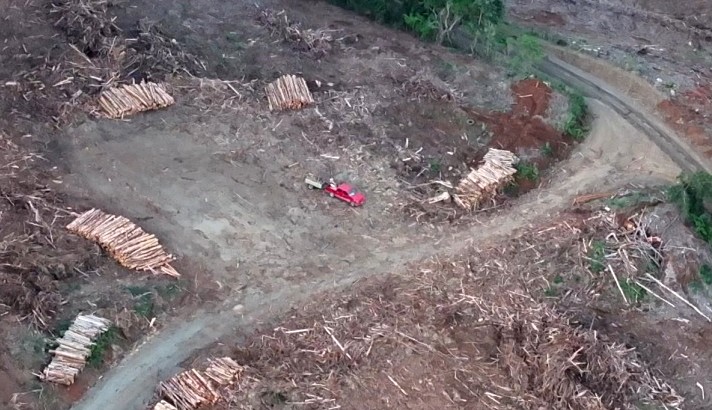Urban Tree Study: Only 3 Communes in Greater Concepción Meet WHO-Recommended Index
Urban growth and climate change make it essential for cities to have a significant number of trees to reduce temperatures and promote community health, especially for older adults, who may suffer from cardiovascular issues and thermal stress during heatwaves. Additionally, trees help improve biodiversity and absorb pollutants.
This was explained by the Regional Minister of Housing and Urban Development (Seremi MINVU), Claudia Toledo, highlighting the importance of an urban tree study conducted in Greater Concepción. The study revealed that, overall, the area falls far below the WHO-recommended standard of 1 tree per 3 people.
The drone-based survey showed that Hualqui leads with 76% tree coverage (1 tree per 1.43 people), followed by San Pedro de la Paz at 21% (1 tree per 1.48 residents), and Santa Juana at 20% (1 tree per 5.1 people).
Further down are Chiguayante and Lota, both at 16% (1 tree per 6.3 inhabitants); Penco at 13% (1 per 7.6 residents); Tomé at 11% (1 per 8.9 residents); and Concepción at 9% (1 tree per 7.6 people).
The communes with the least urban tree coverage, emphasized the Seremi, are Hualpén at 7% (1 tree per 14.7 people), Coronel at 5% (1 per 20.5 inhabitants), and Talcahuano at 4% (1 per 22.4 people). "These rank among the lowest in coverage and jeopardize urban quality of life," she stated.
Higher Rankings
Hualqui Mayor Ricardo Fuentes, whose commune leads in urban tree coverage, described his city as green, prioritizing community and tourism. He noted that in 2008, they began planting native trees in urban areas—provided by CORMA—to lower temperatures and enhance well-being. "The study's high percentage surprised us (…). We’re now working with the Environment Ministry to reforest La Rinconada, an urban area, as well as plazas and small squares."
He added that trees are also being planted along sidewalks frequented by seniors or people with disabilities, with plans to expand this effort citywide.
San Pedro de la Paz’s Aseo y Ornato Department stated that their high tree coverage reflects sustained efforts to integrate green spaces into urban planning, driven by environmental and social goals. Trees are not just aesthetic but also improve air quality, reduce temperatures, absorb rainwater, provide shade, and boost biodiversity—especially in densely populated areas.
They added that the current administration is implementing a comprehensive tree-planting strategy focused on native species, community involvement, and public space revitalization. Their goal is 5,000 new trees by the end of the mayor’s term, targeting areas with low green coverage and high foot traffic.
Johana Riffo, Environmental Officer of Santa Juana (ranked third), noted about 10 trees per block. "This season, we’ve replaced 40 native species and over 40 shrubs that withstand high temperatures, require less watering, and lose fewer leaves—acting as natural temperature regulators against pavement heat."
She highlighted Millaray Street, part of the Ruta de la Madera’s urban zone, where trees were planted to reduce noise pollution and improve residents’ mental health.
Areas Needing Improvement
Hualpén’s municipality reported efforts to convert barren and littered urban zones into quality green spaces, such as Gibraltar, Monaco, Holanda, and Rucalhue streets, as well as Parque Central and René Schneider areas, increasing the commune’s tree count.
They are also advancing projects like Patria Vieja, Escocia, Cerro Amarillo, and Finlandia parks, alongside designing other life-enhancing spaces.
Coronel Mayor Boris Chamorro expressed concern over the MINVU report, acknowledging their low ranking. However, he highlighted progress: green areas per capita rose from 2.6 m² in 2015 to 7.2 m² during his tenure, with new urban parks reclaiming public spaces for families.
Meanwhile, Talcahuano’s Municipal Administrator Enrique Inostroza disputed MINVU’s figures, citing 14,485 trees (1 per 10.1 residents). Still, he valued the study, recognizing urban trees’ aesthetic, environmental, and quality-of-life benefits.
He detailed 1,409,184 m² of green areas but admitted deficits in dense urban zones, pledging to expand tree coverage. Their goal is sustainable urban planning, maintaining existing trees and progressively planting locally adapted species with community input.
The Goals
"This isn’t just about planting trees—it’s about environmental equity and territorial justice, reducing heatwave hospitalizations, and dignifying concrete-heavy neighborhoods. Every community deserves shade, clean air, and gathering spaces. Each should be a climate and social refuge—a greener, healthier Chile," stated the Seremi.
Christian Velásquez, MINVU Urban Projects Head, explained they use deficit models based on heat maps, vegetation cover, and population density, prioritizing thermally vulnerable areas.
"Interventions focus on native or adapted species with dense canopies and non-invasive roots for effective shade and underground utility protection. Studies show strategically placed trees reduce surface temperatures by 2–8°C, with each tree capturing up to 150 kg of pollutants yearly. Our baseline: 9 m² of green space per capita and 1 tree per 3 people, integrating ecological corridors for climate resilience. Projects must meet functionality, equity, and maintenance criteria for measurable ecosystem benefits."
Franco Cuevas, MINVU Urban Geographer, added they’re structurally transforming city planning to integrate trees and green infrastructure. "We’re updating urban design standards, incorporating green quality metrics in project evaluations, and strengthening municipalities’ technical capacity to manage urban ecosystems."
They’re also integrating health and climate indicators into urban impact assessments.
A key step is the "urban tree digital twin," a real-time modeling tool for vegetation coverage. "Launching by year-end, it will merge environmental, urban, and social data to guide sustainable public-space decisions."
"This isn’t just planting trees—it’s reimagining cities across all public agencies with a cross-cutting, sustainable vision already underway, though without a fixed timeline."
Source:
Diario Concepción
{{TEXT_29}}{{TEXT_30}}

















